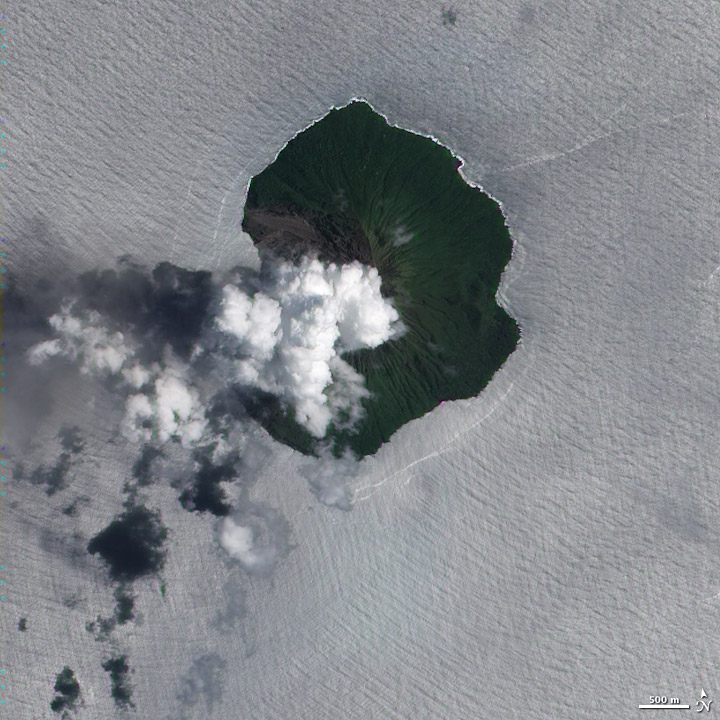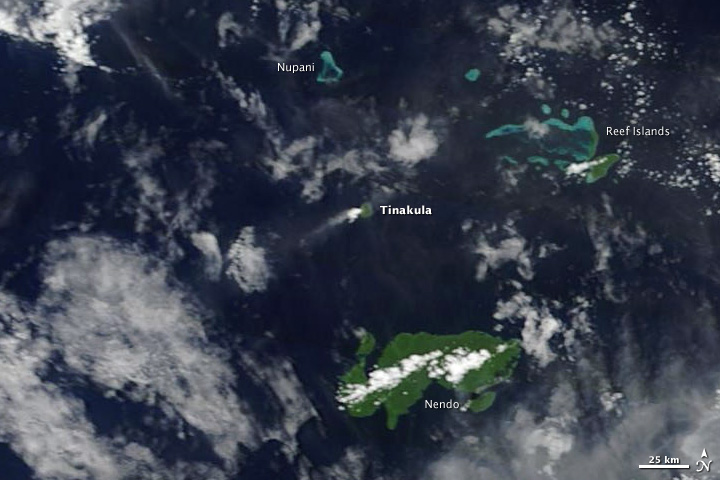Satellite Close-Up: A Remote Eruption


Say hello to Tinakula, a small volcanic island in the South Pacific that has been caught doing some huffing and puffing this week by NASA satellites.
Tinakula is a 2-mile-wide (3.5-kilometer) island that lies 1,400 miles (2,300 km) northwest of Brisbane, Australia. The island, which rises to a height of 2,792 feet (851 meters) is actually just the tip of a large volcano that rises some 2 to 2.5 miles (3 to 4 km) from the ocean floor.
In the above image, taken by NASA's Earth Observing-1 (EO-1) satellite, a plume of volcanic gas, possibly mixed with a little ash, can be seen rising above the volcano's summit.
On Feb. 13th and 14, NASA's Moderate Resolution Imaging Spectroradiometer (MODIS) detected heat signatures on Tinakula, and a small plume was apparent in visible imagery (see the image below). Satellites have been detecting these anomalies off and on over the past decade, but the volcano's remoteness means that eyewitness confirmation of eruptions is hard to come by, according to a NASA statement.
Get the world’s most fascinating discoveries delivered straight to your inbox.




